#northern bobwhite
Text

Northern Bobwhite
#birds#original photography#nature photography#lensblr#artists on tumblr#nature#vancouver island#pnw#birding#bird photography#birdwatching#original photography on tumblr#northern bobwhite
1K notes
·
View notes
Photo

Northern Bobwhite
364 notes
·
View notes
Text
BOTD: Northern Bobwhite

Photo: Andy Morffew
"The only native quail in the east. Its whistled bob-white! call is a familiar sound in spring in farmland and brushy pastures. The birds are heard more often than seen; although not especially shy, they often keep within dense low cover. During fall and winter, bobwhites live in coveys, averaging about a dozen birds. At night they roost on the ground in circles, tails pointed inward, heads pointed out."
- Audubon Field Guide
#birds#northern bobwhite#birds of north america#north american birds#quail#quails#landfowl#bobwhites#birds of the us#birds of mexico#birds of the caribbean#birds of canada#birds of america#american birds#bird watching#birdblr#birblr#bird of the day#Colinus virginianus
24 notes
·
View notes
Text
do not fail me bird call identifier app I need you
#cardinals of course#song sparrow#northern bobwhite#chimney swift#I think it was a swift trying to get into my window last night
2 notes
·
View notes
Text
Musicals as Birds, Part 2/?: Heathers
or should I say Feathers
Veronica Sawyer: Scrub Jay

Martha Dunnstock: Northern bobwhite
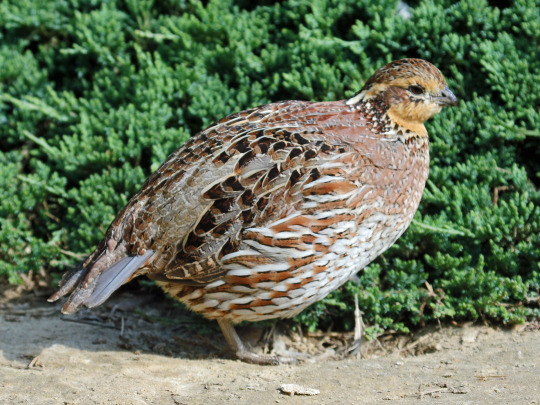
Heather Chandler: Eclectus parrot

Heather Duke: Resplendent quetzal

Heather MacNamara: Western meadowlark
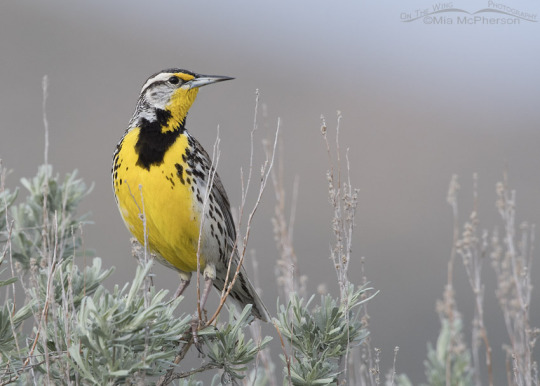
Jason “JD” Dean: Hooded crow

#heathers#musical theatre#birds#broadway musicals#musicals#veronica sawyer#martha dunnstock#heather chandler#heather duke#heather macnamara#jason dean#jd heathers#scrub jay#northern bobwhite#eclectus parrot#resplendent quetzal#western meadowlark#hooded crow
12 notes
·
View notes
Video
Northern Bobwhite by Coyoty
Via Flickr:
Colinus virginianus. At the National Aviary in Pittsburgh, PA.
#National Aviary#Pittsburgh#Pennsylvania#PA#zoo#aviary#nature#animal#fauna#bird#avian#bobwhite#Northern bobwhite#wild#life#wildlife#biodiversity#square#square format#Animal Planet#Colinus virginianus#flickr
5 notes
·
View notes
Photo
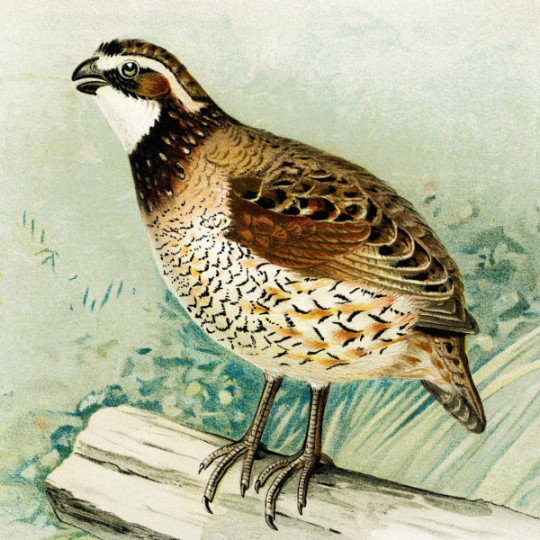
A new variant has been added!
Northern Bobwhite (Colinus virginianus)
© John Livzey Ridgway
It hatches from black, bold, brown, brushy, colored, consistent, dark, distinctive, eastern, heavy, intricate, native, rotund, small, striking, and white eggs.
squawkoverflow - the ultimate bird collecting game
🥚 hatch ❤️ collect 🤝 connect
3 notes
·
View notes
Text

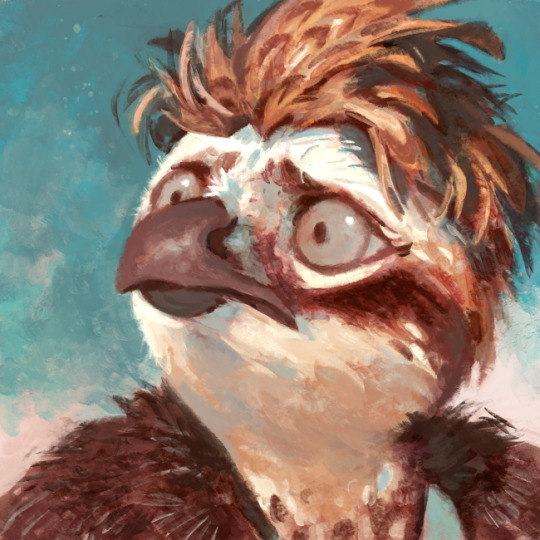
Painted portrait for @sagehaubitze.
The species of bird is a northern bobwhite quail with a blend of male and female markings.
1K notes
·
View notes
Text

#quailfeather#ancient skyclan#medicine cat#based on a northern bobwhite quail#she seems sweet and smart#poor lady isn't built for hot weather (me either)
3 notes
·
View notes
Text
A Little Catching Up Part 2...
A Little Catching Up Part 2…
Lotus corniculatus (Bird’s Foot Trefoil) on Brandon Road along the south side of Farrington Park on 6-12-22, #890-36.
Hello everyone! I am back again with part two. It has been very hot but we had a little more rain which cooled things down a bit for a couple of days. It will be in the upper 90’s again this week. It’s OK as long as I can keep working in the shade and there is a little…
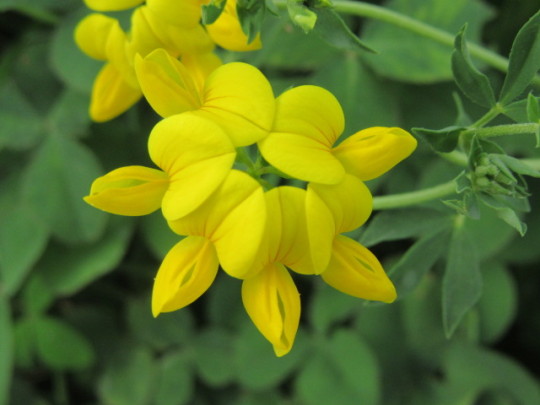
View On WordPress
#Anemone virginiana (Tall Thimbleweed)#Asclepias syriaca (Common Milkweed)#Callirhoe involucrata (Winecup Mallow)#Colinus virginianus (Northern Bobwhite Quail)#Entodon seductrix (Seductive Entodon Moss)#Erigeron divaricatus (Dwarf Conyza or Dwarf Fleabane)#Euphorbia davidii (David&039;s Spurge)#Galium circaezans (Forest or Licorice Bedstraw)#Hemerocallis fulva (Orange Day-Lily)#Hypericum perforatum (Common St. John&039;s Wort)#Mimosa nuttallii (Catclaw Briar)#Parietaria pensylvanica (Pennsylvania Pellitory)#Plagiomnium cuspidatum (Woodsy Thyme-Moss)#Sanicula canadensis (Black Snakeroot)#Sceptridium dissectum (Cutleaf Grapefern)#Silene stellata (Starry Campion)#Tragopogon dubius (Yellow Salsify)#Triodanis perfoliata (Clasping Venus&039;s Looking Glass)
0 notes
Text
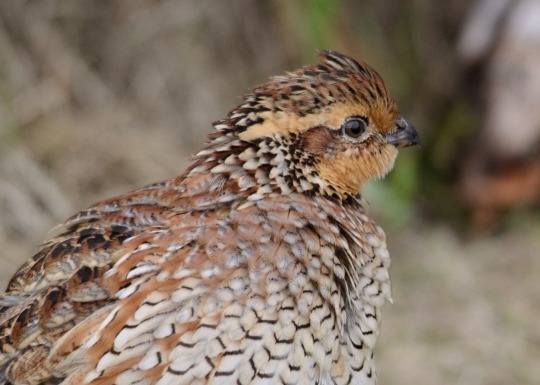
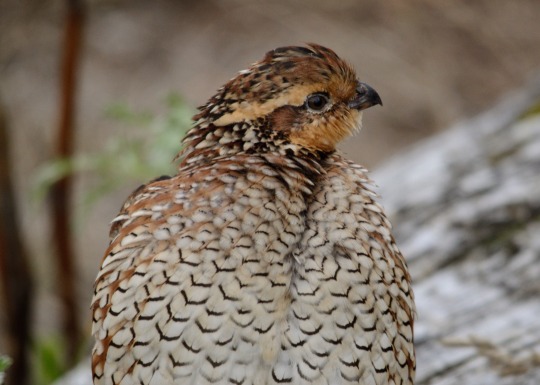
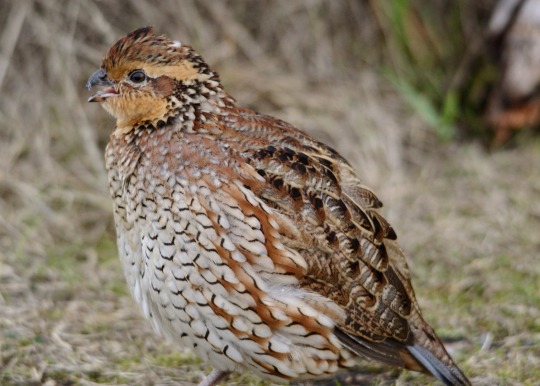
A tiny Northern Bobwhite chirps with the sweetest voice
#birds#I love her#original photography#nature#vancouver island#nature photography#pnw#birding#bird photography#birdwatching#original photography on tumblr#northern Bobwhite
52 notes
·
View notes
Text

Northern Bobwhite Quail (Colinus virginianus), male, family Odontophoridae, order Galliformes, found in the central and eastern U.S., and eastern and central Mexico.
photograph by John Magera/USFWS
#quail#bobwhite#colinus#odontophoridae#galliformes#bird#ornithology#animals#nature#north america#mexico
650 notes
·
View notes
Text

Wild Coyote & Leaping Pronghorn, Dec 2023, ink.
List of north american prairie species shown here, roughly top to bottom: Northern Bobwhite, Engelmann's Milkweed, Augochlora sweat bees, Indiangrass, Pronghorn, Widow Skimmer dragonfly, Blue Darter dragonfly, Common (White) Yarrow, Bluet damselfy, Coyote, Giant Grassland Cicada, seeds of Prairie False Foxglove, American Basketflower seedheads, Firewheels, Prickly Pear cactus, Rainbow grasshoppers, Sideoats Grama.
#my art#artists on tumblr#wildlife illustration#pronghorn#coyote#grassland#ink#prairie#this is mostly one ink color. it's so easily workable it's almost impossible to add the blue - I should have done the blue first#christmas gift for my dad since he liked the other unhinged coyotes I have drawn#described#ID in alt text
47 notes
·
View notes
Text
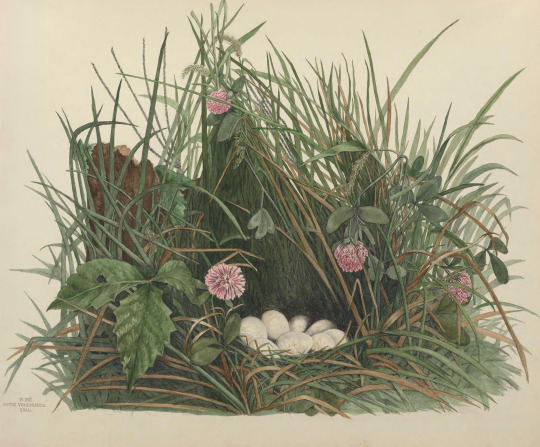
Northern Bobwhite Nest
Nest of the Northern Bobwhite (Colinus virginianus), which is also known as the Virginia quail or bobwhite quail. This ground-dwelling bird likes grassy fields and piney woodlands, and its call sounds like "bob WHITE!"
SciArt by Virginia Smith Jones for the Illustrations of the Nests and Eggs of Birds of Ohio, Vol. 1 (1886). View more beautiful illustrations from this book in Biodiversity Heritage Library with thanks to Smithsonian Libraries and Archives for digitizing.
#sciart#histsciart#bhlib#naturalhistory#ornithology#bobwhite#birds#birds nests#women in science#women in art
118 notes
·
View notes
Text
More scientific evidence has surfaced to show that while Mittens may be your sweet angel, letting her roam outside is also a big threat to biodiversity.
Who are they? A single woman's life companion. A dog lover's scapegoat. They are the freaky little furry guys we know as the cat.
What's the big deal? Scientists reviewed more than 100 years' worth of scientific studies to gain a better understanding of which animals free-ranging cats will prey upon or scavenge.
The resulting paper, published in Nature Communications, found that free-ranging cats (including domestic and feral) will eat 2,084 different species of birds, mammals, reptiles, amphibians and insects. There were even cows on that list, though they were probably the result of scavenging rather than hunting.
The list of creatures cats have chowed on includes 347 species of conservation concern, including Newell's shearwater, green sea turtles, the northern bobwhite quail and the little brown bat.
While cute, cats are skilled predators, so much so that they've been documented as a major threat to the biodiversity of bird species in North America.
They're also linked to the extinction of more than 60 species worldwide.
Despite the problem globally, a separate report in 2022 found that "cats are either unmanaged or managed using scientifically unsupported and ineffective approaches ... in many jurisdictions around the world."
Keep your cats indoors
6 notes
·
View notes
Note
JUST SAW YOUR ASK ON HELLSITE-GENETICS AND NEEDED TO SEND YOU AN ASK!! /POS
you are like literally the person i want to be with the bird stuff i absolutely LOVE belted kingfishers they are so pretty. they are also one of my favorite birds (i have too many favorites i cant just pick one) but birds are so smart and their feathers are so cool like omg i love birds
im currently a small senior in highschool/sophomore in college and want more people who like birds in my life :))
anyway whats your favorite thing to study about birds? mine is how smart they are but also like how bluejays have the feathers that reflect the sun to show the blue :))

[id: screenshot of two text messages that say "oh good i get to get [sic] explain this to you" / "you will regret this" followed by the ellipses of someone typing. end id]
FELLOW BIRD ENJOYER SPOTTED
(sad my ask to hellsite-genetics didn't get me a bird tho but i did get the added satisfaction of knowing the goofy goober song is a member of the genus i exalted in my ask so all in all it's a solid win)
let me preface all of this with saying that while a lot of my experience with birds and learning about birds has been in a classroom setting i've also spent *checks watch* three summers now (including this upcoming one) doing field work working almost exclusively with birds in the midwest united states, so honestly a lot of the things i've learned have been incidental knowledge i've obtained working in the field. i'm not an *expert*, i just have a BS in environmental science and a lot of birding experience.
full slapshod essay rant of me going on about birds (edit: i just reread it and good GOD i went on for a while) of me talking about birds below the cut bc i already know this is gonna be far too long but you asked about my favorite thing in the world so this is on you my friend (affectionate)
i'm definitely ENRAPTURED with how smart birds are. They're so fucking intelligent it's almost scary.
since you brought em up imma talk about bluejays first!! i did part of a project my last year of college on bluejays!!
blue jays will often mimic the calls of other birds, esp predators like red-tailed hawks, with such accuracy that even bird id apps like Merlin (shameless plug) will mistake a mimicking bluejay for a real red-tailed. when i was doing audio surveys for northern bobwhites we had to have a separate training day where the only thing we focused on was how to tell if a mockingbird / thrasher / blue jay was mimicking the distinct bobwhite call and how that wasn't to be counted as a sighting.
(in my experience a lot of it has to do with pitch, repetition, and completion of what's considered the 'full song' of the NOBO, since a lot of mimids won't do the 'full song' and will just handpick bits to weave into the rest of their noises. bluejays especially will do this. mockingbirds will sometimes do the full song, but NOBOs have a pretty measurable repetition gap between their songs, at least in the areas we were doing surveys).
i remembered learning in a class that some bluejays will find bird feeders and spy on them, then mimic red-tailed and red-shouldered hawk calls to get the other birds to scatter, so they can then fly down and eat without having to fight for the tastiest bits.
when i was working with birds over the summer, one of the things we did was setting ground traps for mourning doves so they could be banded and then tracked for hunter take (they're a game species in my state). there were always blue jays in those traps. they're so fascinating to see up close, with their heavy bills and tough little feet and they're so full of rage. and they're loud.
also the thing about their FEATHERS - YES. it fucked me up to learn blue jays are naturally brown. iirc it has to do with the way the barbs on their feathers are put together with modified cells, which scatter the light in a special way to make them appear blue. If you get a bluejay feather in your hand it's only blue at certain angles and the undersides are almost usually completely brown unless you hold them in the light just so.
blue jays are part of the family Corvidae so it makes sense why they're so smart, in the family with other birds like ravens and crows.
well i didn't mean to go on for so long about blue jays. they are wonderful tho aren't they?? <3
my favorite thing to study about birds??? hoooooo boy what a question. everything?? is everything an option??
habitat effects on population size and habitat selection at the individual level is fascinating. i've done a lot of work with population studies, basically doing audio-visual surveys (point counts) of how many of x and y and z target species live in this area at a given point in time, then using that data to extrapolate potential population numbers in an area as narrow as a few square miles and as wide as the whole state (i worked for the state department of natural resources so we were focused only on our state obv).
in that effort, using that information to both directly and indirectly learn what environmental factors affect which bird species and how was so so interesting to me, and some of them are things so small we don't even think about them sometimes!! if there's as few as a handful of pine/cedar/evergreen trees in a field or grassland, you're far more likely to find cedar waxwings and indigo buntings, and you rarely see them in areas dominated by deciduous trees. red-winged blackbirds love wetlands, and while they aren't (iirc) specifically wetland-dependent, something as small as a single pond is enough to attract them in droves.
behavior is also such a cool topic to me, which i've learned more and more about just by birdwatching and attending bird-related conferences and working with wildlife biologists.
birds like the brown creeper are bark foragers that almost exclusively move upwards along a tree. they'll start at the bottom and move up, and once they reach a point they deem 'too high', they'll fly to the bottom of the next tree and move up. conversely, birds like nuthatches, still bark foragers, almost exclusively move down trees in the same way - they'll start at the top, forage downwards, and when they reach the bottom, they'll fly back to the top and do it again.
the yellow-bellied sapsucker (woodpecker family), as the name implies, eats a lot of sap, so they drill holes into a tree, like woodpeckers do, but they lay them down in 'bands' that run horizontally around the tree, often with multiple rows on top of each other, leading to a grid-like pattern of shallow holes only an inch or two apart from each other. that's often the best way to figure out where to look for sapsuckers when you're birding!! (apart from actually seeing or hearing the little guy, obv.)
incidentally, i learned that it's really really hard to put backpack trackers on henslow's sparrows, not bc they're so small and hard to catch, but because they're smart enough to realize there's a thing on their back and will, somehow, pull the backpack around to their front and completely mangle it beyond repair, and that's before they chew it off.
god i could go on forever. kestrels. ospreys. owls. nightjars. songbirds. fisherbirds. albatrosses. puffins. kinglets. sparrows. starlings. they're all so good and perfect and wonderful and fascinating and if i could learn everything about all of them forever i would.
in an extremely roundabout way of answering your question, if you're still reading and haven't run for the hills yet, i can't pick just one thing to call my favorite to learn about birds. everything about them is so interesting and makes me so excited to learn and see and talk about.
belted kingfisher lovers unite!
edit: I DIDN'T EVEN TALK ABOUT TURKEYS EITHER I'M DOING TURKEY RESEARCH TOO -
#megara.txt#birds#ask#you found it#the bird button#ya push the bird button ya better be prepared to hear about birds#there's a channel in my dungeons and dragons discord server reserved for them to let me talk about birds#in an unsurprising turn of events this is why i go by starling
3 notes
·
View notes